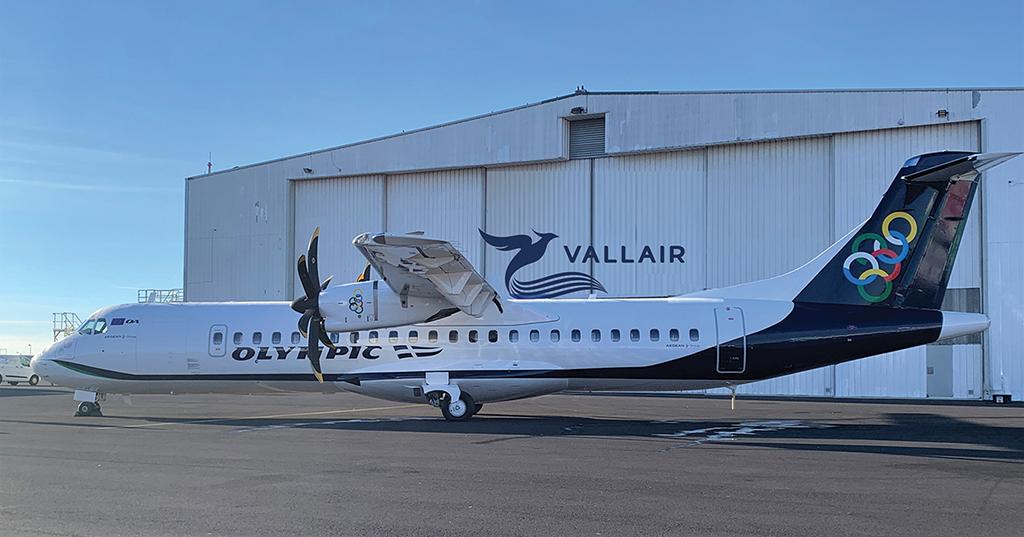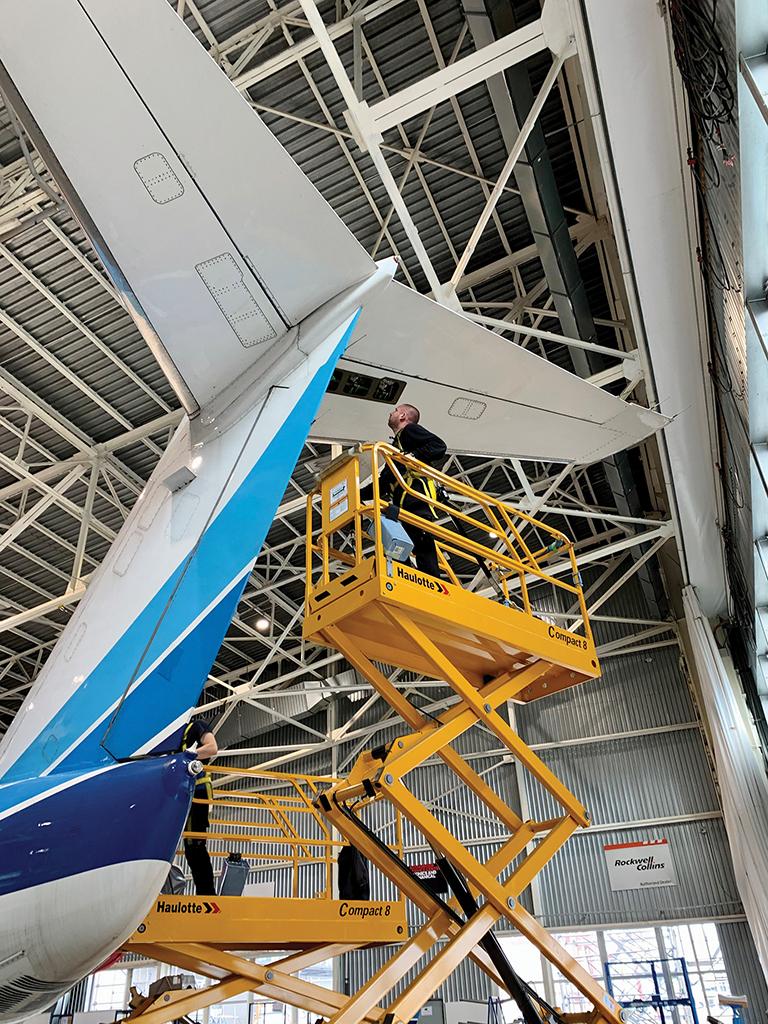
With regional jets as the leading revenue producers, a steady MRO market for regional airliners is expected to prevail over the next 10 years as legacy aircraft remain in service with their current operators or transition to others through sales and lease returns.
“The market for used regional airliners, turboprops in particular, is recovering post-COVID quite well and arguably faster than larger aircraft since they predominantly operate in short-haul domestic or neighboring-country markets,” says Angus von Schoenberg, partner at ALTEA, a London-based consulting firm. “Many continue to be used in a right-sizing context in place of larger aircraft where traffic has not yet recovered. Used units have been relatively cheap to lease or buy over the last two years, but that is not expected to last as supply tightens.”
The result will be at least a modest rate of growth in regional airliner aftermarket support. The Oliver Wyman 2022 Fleet & MRO Forecast—for 2022-32—released March 21 of this year, predicts that total MRO spending on regional jets in 2022 will be $5.6 billion, increasing to over $6.2 billion by 2032. For turboprops during the same 10-year period, the projected numbers are $2.7 billion for 2022, rising to $3.2 billion in 2032. Engine work is projected to make up the lion’s share of MRO spending, for a combined regional jet/turboprop total of $3.55 billion this year, increasing to $4.1 billion by 2032.
Aviation Week’s 2022 Commercial Fleet and MRO Forecast projects slightly different numbers, with spending on regional turbofan aircraft decreasing from $6 billion in 2022 to $5.3 billion by 2031. During the same 10-year period, turboprop spending is projected to decrease from $3.2 billion to $2.9 billion.
“The Oliver Wyman 2022 Fleet & MRO Forecast numbers for regional airliners are based on the assumption that the current regional jet fleet will remain in service well past historical retirement ages, due to a lack of suitable replacement options which will drive MRO growth,” explains Brian Prentice, Oliver Wyman partner and global lead for operations, manufacturing and MRO. “On the turboprop side, we are forecasting more deliveries especially within the next few years, which will result in more MRO spending toward the end of the forecast.”
For both regional jets and turboprops, modifications represent another prominent category of MRO spending for the forecast period, with the jet and turboprop shares at $409.6 million and $325 million, respectively, for 2022. By 2032, the respective numbers will be $380 million and $244.7 million. Modifications include lease returns, new and refurbished interiors and passenger-to-freighter (P2F) conversions, Prentice explains.
“Our view is that as the global regional jet and turboprop fleet ages, modifications will be driven by investments in the cabin and cockpit to extend the life of the aircraft,” he says.
Prentice expects that over the next 10 years, some 1,200 regional jets will be delivered out of the factory, coupled with an annual retirement of 75, for a net fleet growth of 500. For the turboprops, 950 new deliveries are projected over the same decade, with 45 yearly retirements. “We also expect to see an increase in turboprop passenger-to-freighter conversions over the next decade,” he says.

A more measured view of the market is expressed by Adam Guthorn, managing director of Alton Aviation Consultancy. “In the event of an aircraft transition, a major airframe inspection along with interior refurbishment and paint would be expected; however, activities [in the regional airliner MRO market] have been subdued,” he says. “Further, the parked regional fleet has increased from 1,000 aircraft in early 2020—pre-COVID—to approximately 1,600 aircraft today. So the ultimate fate of many aircraft—return to service versus part-out—has yet to be determined.”
Guthorn also points to the 50-seat-jet MRO market, which he describes as “well into its sunset phase,” now that the three major U.S. carriers—Delta Air Lines, United Airlines and American Airlines—have announced plans to significantly reduce their fleets by 2026. American, he notes, has retired a large number of 50-seat jets over the past two years.
Ismail Mokabel, senior vice president and head of aftermarket at MHI RJ Aviation, is more optimistic. “The maintenance requirements for the 50-seat fleet will continue and provide a vibrant MRO market over the next decade,” he argues. “Given that there is no replacement for these aircraft in design or even being planned at this stage, the current generation of aircraft will continue to operate—mainly in the United States—for the foreseeable future.”
Larger regional jets will account for much of the growth in the regional aircraft MRO market. As an example, Alton Aviation’s Guthorn cites Embraer’s 170/175 family as the aircraft of choice for U.S. regional airlines, and one that fared best throughout the pandemic.
“While the Embraer 170 and 175 are overwhelmingly owned by their operators (93%) and therefore not often traded on the used market, they will generate the most regional aircraft MRO spend in 2022—specifically $1.5 billion,” Guthorn says. “Similarly, the Bombardier CRJ700/900/1000 fleet, which is 85% operator-owned, has fared relatively well owing to its U.S. concentration and will generate $1.2 billion in MRO in 2022.”
As for P2F opportunities, especially in the 50-seat-jet segment, Guthorn notes that only 13 CRJ100/200s have been converted and he says that none has been converted for the past several years. “The regional aircraft P2F market has focused much more on turboprops, primarily ATR 72s and ATR 42s, with some activity on Saabs,” he says. “In March of this year, Embraer announced the launch of an E190/195 freighter conversion program.”
Steve Pike, aerostructures and MRO services sales manager for Vallair, reports that the Montpellier, France-based company has noted some lease-return activity as well as aircraft being taken out of storage by leasing companies and returned to service with new European operators. He says Vallair’s exclusive regional airliner MRO focus is the ATR turboprop family, adding that the work varies and includes all types of maintenance events.
“This includes new paint, customer livery applications, major airframe inspections up to and including the 12-year check, as well as major component changes such as landing gear and engines,” he says.
In addition, Pike cites service bulletin work, avionics upgrades and engine borescope inspections. “These work packages always drive additional work, with corrosion findings in particular arising out of the larger airframe inspection packages. Dent and buckle findings may also give rise to reworking of old repairs to new approved design organizational approval/OEM standards,” he adds.
Asked about the potential MRO market for turboprops in the 50-seat segment, Pike says there is an opportunity for the 48-seat ATR 42-600. “Generally, we see the ATR 72-600, which is configured for 78 seats, at Vallair,” he reports.

For companies that service regional airliners in Europe, Russia’s war in Ukraine could be a wild card. Vytis Zalimas, CEO at JETMS Regional in Vilnius, Lithuania, says this situation will particularly affect maintenance on aircraft coming off lease.
“Over the past 3-5 years, lease returns generated a considerable amount of business, when the regional aviation industry was forecasted to renew their current fleets,” Zalimas says. “However, looking forward—after the war in Ukraine—the situation might change dramatically. Operators may continue with the same fleet for longer time periods. Therefore, MRO activities may stay at the same level for the retrofit fleets.”
Zalimas adds that leasing companies typically require fresh airframe and engine maintenance checks to enable aircraft to operate for at least two years without longer grounding for maintenance. Complete avionics upgrades for aircraft to comply with recent air traffic control and flight safety directives, he points out, are also projected.
Carl Glover, vice president of sales and marketing for the Americas at AAR, says the demand for MRO from regional airline operators is expected to remain constant.
“There are well-publicized maintenance capacity constraints regarding the support of these fleets and, more recently, flight crew availability,” Glover says. “We have seen some retirements on the mature CRJ200 platforms but, conversely, a slight uptick for the ERJ145 aircraft. The mainstay fleets seem to continue to be the E-Jet and CRJ fleets, with considerable numbers among the U.S. regional carriers.”
Glover reports that there are “smaller pockets of consideration” for supply chain issues with respect to support of older fleets. He blames cutbacks on spending for inventory and associated repairs during the pandemic, as operators have focused on capacity and cash preservation. “This is now seeing a rebound and brings with it challenges on inventory availability and capacity,” he says.






